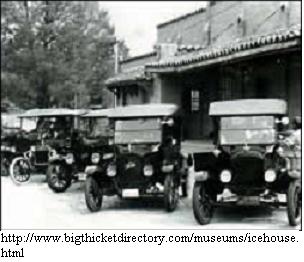Hardin County lies in the Big Thicket National Reserve in the southeast part of Texas. Caddo and other Indian tribes inhabited the area and utilized the natural resources of the marshy lands. Indian tribes occupied the land until the Spanish government established control over the area in the 1700s. Lorenzo de Zavala acquired the territory through the Atascosito District in 1834.
After Texas' annexation, principle figures from  Liberty and Jefferson counties oversaw the running of the territory until sufficient population increases in 1859 led to the founding of Hardin County. The Texas legislature stipulated that the county and county seat should be named after the Hardin family of Liberty County. Farming of corn, sweet potatoes, hogs, and cattle supported the economy during the Antebellum period.
Liberty and Jefferson counties oversaw the running of the territory until sufficient population increases in 1859 led to the founding of Hardin County. The Texas legislature stipulated that the county and county seat should be named after the Hardin family of Liberty County. Farming of corn, sweet potatoes, hogs, and cattle supported the economy during the Antebellum period.
Slavery was not a polarizing issue in Hardin County as in other southern states, but county officials supported the Confederacy's cause. The Freedmen's Bureau attempted to create equality between whites and blacks, but these programs ultimately failed because of tensions between the local whites and Federal officials.
The county experienced a great breadth of change from Reconstruction through the Great Depression. After the war, farming recovered and the economy stabilized with the emergence of the timber industry in the 1870s. Hardin County remained relatively rural until the introduction of electricity in 1909. The Sabine and East Texas Railroad revolutionized logging and production. With the use of electricity, homes became more modern and a small population purchased automobiles.
City/State/Federal Agency
Genealogy
Museum/Historic Site
- Kirby-Hill House Museum
- Oil Patch Museum
- Pelt Pond and Rural Life Museum and Bed & Breakfast
- Silsbee Ice House Museum and Cultural Center
- Village Creek State Park
Documents/Resources
- Books
- Genealogical Periodicals; Automobile insurance rate guide
- Oil and gas management plan Big Thicket National Preserve
- Texas Forest Service; Best Management Practices Project (Journal)
- 1990 Census of population and housing (Map)
- Flood Insurance study (Microfilm)
-
Hardin County - Timeless Treasures
Text: http://www.tshaonline.org/handbook/online/articles/hch06 Handbook of Texas Online, Texas State Historical Association.
To learn more about Hardin County's history check out our Local Voices' writer Renee Hart Well's column "Hart to Heart From Hardin County" on our Local Voices page.